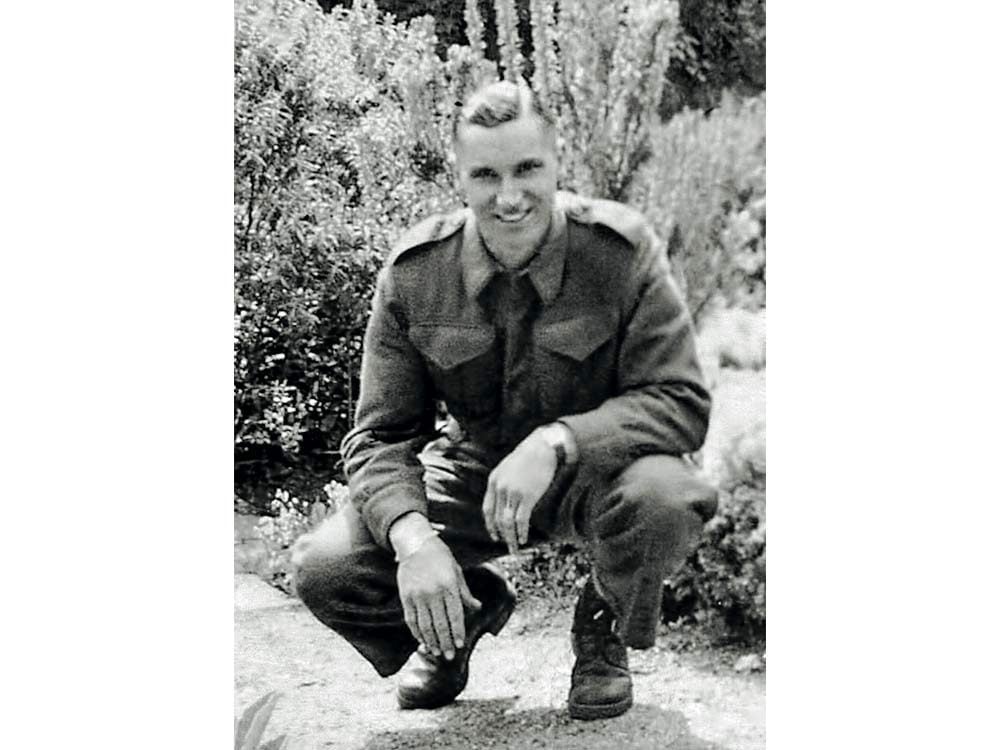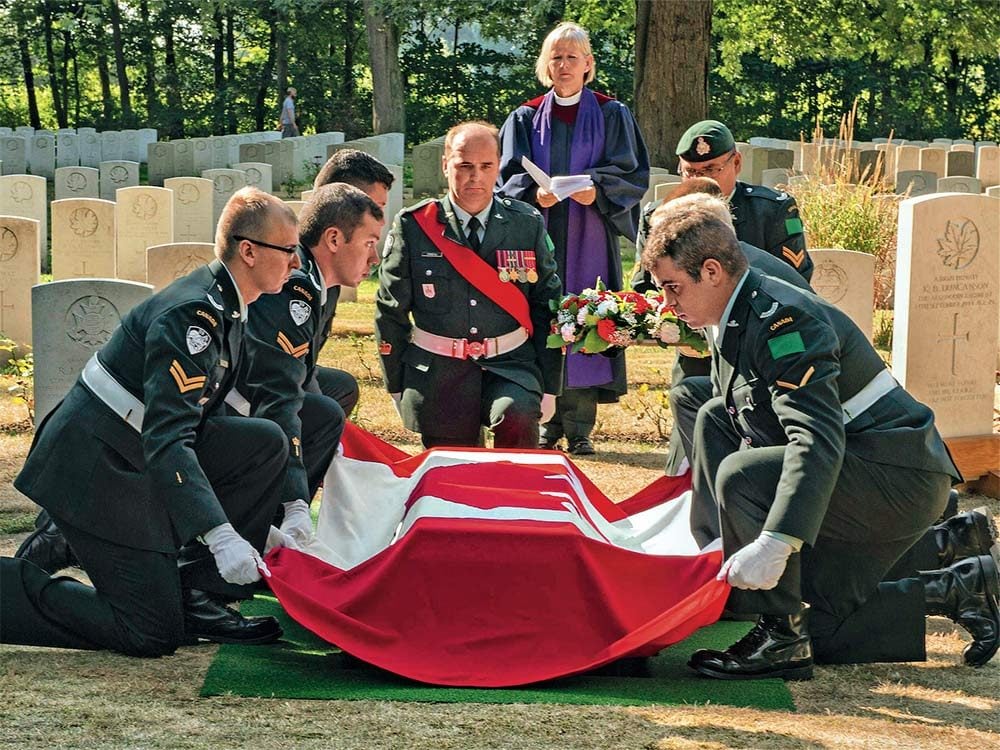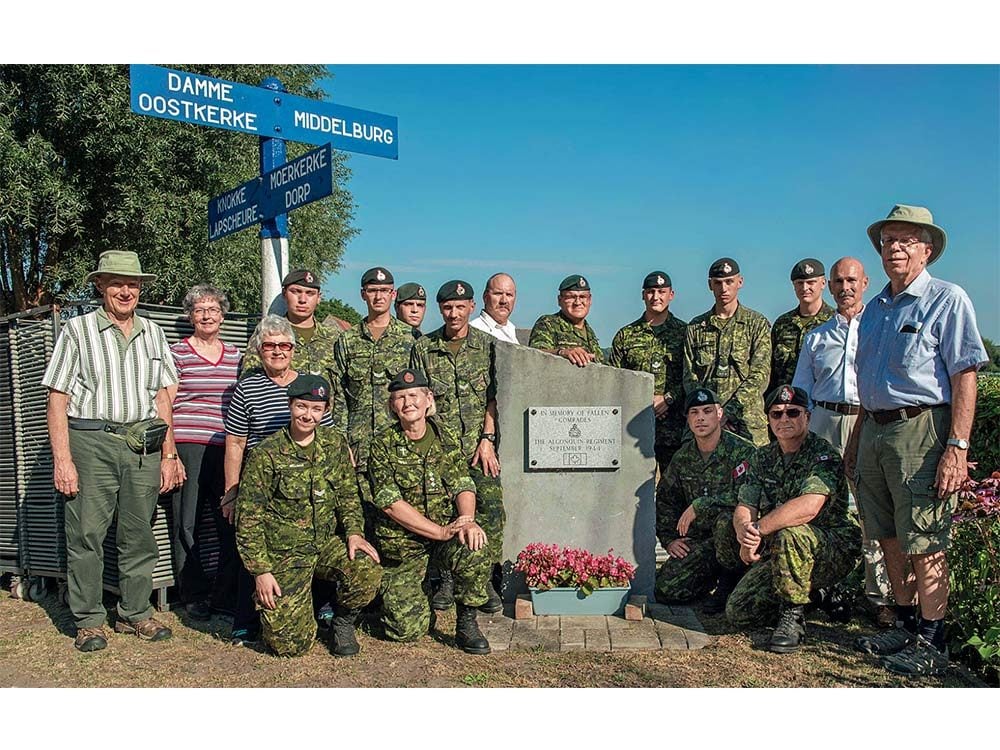
Discovering Pvt. Kenneth Donald Duncanson
No one could have prepared me for the shocking revelation that I received on a lovely spring day in early May 2016. The news launched me on a journey of discovery, commemoration and remembrance. The Casualty Identification Program of the Department of National Defence (DND) contacted me about the discovery in Belgium of the remains of a Canadian soldier from the Second World War. He was identified as Private Kenneth Donald Duncanson, my mother’s first cousin.
I immediately recalled images of Kenneth’s home in Dutton, Ontario, and his name engraved on the family tombstone with his parents, my grandparents and great-grandparents. Through a second cousin in Dutton, I was given Kenneth’s military medals and photos of him in uniform in England. I inherited Kenneth’s wedding photo from my mother. These are special reminders of this man I never met but with whom I have a deep connection.
Kenneth grew up in Dutton, where his father, Dan, was raised. Kenneth married Lillian Hagerty on October 14, 1939, at age 24. In early January 1940, they opened K. and L. Grocery, a small store on Dutton’s Main Street. Kenneth continued to work for the Strathcona Creamery until he enlisted on August 24, 1942, five days after the Dieppe Raid. After a year of training in Ontario, he went to England for further training. In March 1944, he was assigned to the Algonquin Regiment and landed in Normandy on July 22, at Courseulles.
Kenneth was killed on September 14, 1944, during an unsuccessful attempt by the regiment to establish a bridgehead across the Leopold and Dérivation de la Lys canals at Molentje, Belgium. He was one of eight men whose bodies were not recovered from the battlefield during the chaos of the withdrawal. The location of his remains was unknown until November 11, 2014, when a metal detector hobbyist discovered some military artifacts and human remains in a farm field. On April 5, 2016, the Raakvlak archaeological team from Bruges, assisted by the Directorate of History and Heritage, DND, recovered Kenneth’s remains.

The Story of One Brave Canadian Soldier
My brother David Johnson and I, as next of kin, were invited on behalf of the government of Canada to attend the military burial for Kenneth at the Adegem Canadian War Cemetery in Belgium. My husband, Gordon, accompanied me. Allister Cameron, a third cousin of mine, and his wife Carolyn, from Kenneth’s hometown, joined us in Belgium.
Our five-day trip to Bruges was coordinated by Events and Ceremonies Officer Paulette Ryan from Veterans Affairs. She arranged for our flights from Saskatoon so we could meet her and my brother at the airport in Toronto on Sunday, September 11. She accompanied us on our overnight flight to Brussels and was our escort for the next three days in Bruges. After our arrival, we explored this UNESCO World Heritage Centre on a sunny, warm afternoon, which helped us reset our biological clocks.
The formal part of our journey began on Tuesday, September 13. Our first stop was the archeological laboratory, where we met the team that was responsible for the recovery of Kenneth’s remains and viewed the artifacts recovered. What a surprising and extensive collection of military and personal items! Displayed on one corner of the table was the impressive assemblage of personal items: a signet ring with his initials, KDD, an engraved ID bracelet with Love Lillian on the back, a wallet with his ID card, a Waterman pen and pencil set, and many other artifacts. The general condition of the items was surprising, considering they had been buried for 72 years. I felt profound comfort when we were told that Kenneth’s boots and his bedroll were to be buried with him.
Our afternoon excursion started in the town of Moerkerke. We stood on the street in the town where the troops assembled before launching the attack. Details of the battle were explained while we stood by the canal along Algonquinstraat, a street named in honour of the regiment. We had the luxury of crossing the double canal by a bridge to reach the battleground at Molentje. On the night of the battle, however, the regiment had to cross both canals and the land separating them using heavy canvas-sided assault boats that had to be hauled up and down the steep banks under enemy fire.
These powerful poppy pictures show how Canadians remember.

An Unforgettable Gift
We had an opportunity to meet Luc and Brigitte, the couple who owned the farm where Kenneth’s remains were discovered. After a group photo at the Algonquin Memorial commemorating the Battle of Molentje, we returned to Bruges for dinner with the DHH staff and the 14 members of the regiment who had travelled from North Bay to serve as the burial party.
The one-hour burial service on Wednesday at the Adegem Canadian War Cemetery started at 11 a.m., 72 years to the hour and day after Kenneth died. Padre Frances Savill, chaplain for the regiment, officiated at the service, and my brother David read the Scripture passages. The Canadian flag that draped the casket was ceremoniously folded and presented to me at the end of the service. The flag is one of my special mementoes. It was a solemn and emotional service during which Kenneth was laid to rest with full military honours by his regiment. The gratitude of the Belgian people to their Canadian liberators was evident by the many dignitaries, local citizens, members of regional patriotic associations, and the media that came to pay tribute to Kenneth for his ultimate sacrifice.
After most of the guests had left the cemetery, a local historian invited us to a shady bench to view photos of damage done to the towns of Moerkerke and Molentje during the battle. This was followed by a lunch at a restaurant in Eeklo, where we visited with Céderic, the young man who discovered Kenneth’s remains, and Iris, who urged the Belgian and Canadian authorities to take action on the discovery.
After lunch, the family returned to the cemetery with Paulette to view the gravesite with the headstone in place. It was a peaceful time for quiet contemplation. The Commonwealth War Graves Commission had given me the opportunity to add a personal inscription and a religious symbol to the headstone. I selected a cross to recognize Kenneth’s Christian background in the Presbyterian Church and chose to add You were found and we rejoice! You are not forgotten as an inscription on the headstone. It seemed only fitting that 12 of his comrades who died the same day are buried two rows behind Kenneth’s gravesite.
Kenneth’s story is an unbelievable gift—never imagined and never to be forgotten.
Next, check out these powerful Remembrance Day quotes to share on November 11.